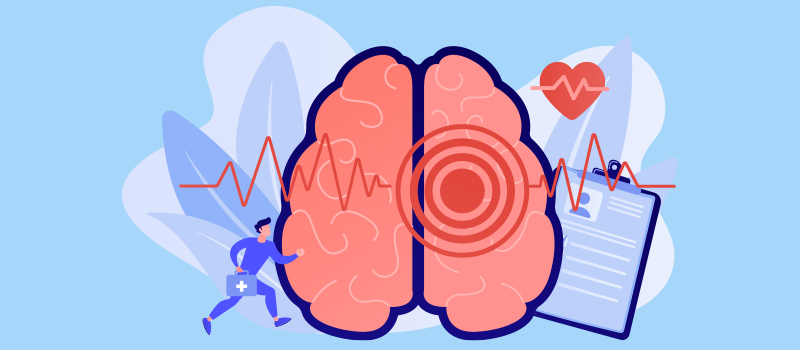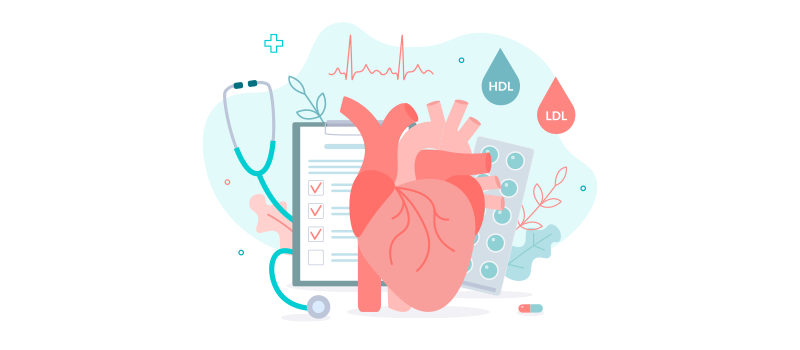What’s the Buzz
The Bee Healthy Blog
Hemorrhagic vs Ischemic Stroke: What’s the Difference?

According to the American Stroke Association and the CDC, some 795,000 people in the United States suffer a stroke every year. That’s one stroke every 40 seconds. The major risk factors for stroke include high blood pressure, high cholesterol, diabetes, heart disease, and smoking. Approximately 9 out of 10 strokes are ischemic strokes and the rest are hemorrhagic strokes.
Early action is critical for both ischemic and hemorrhagic strokes. The sooner you receive emergency care, the higher the chances of survival and the lower the risk of brain damage and long-term disability. Therefore, knowing how to recognize the warning signs and symptoms of an ischemic or hemorrhagic stroke is vital.
Please continue reading to find out the differences between a hemorrhagic and ischemic stroke, including the causes, symptoms, and treatment.
What is the difference between an ischemic and hemorrhagic stroke?
Ischemic stroke
An ischemic stroke occurs due to a blockage in a blood vessel (usually an artery) that supplies blood to the brain. As a result of the interruption in blood supply, brain tissue starts dying within minutes due to a lack of oxygen and nutrients. An ischemic stroke can be of two types:
Thrombotic stroke
Thrombotic ischemic strokes occur due to a blockage in blood flow from blood clots that form in blood vessels in the brain. This type of stroke usually occurs in older individuals with a medical history of high cholesterol due to plaque formation (fatty deposits) in the arteries.
Embolic stroke
In an embolic stroke, the blockage in blood flow also occurs due to a blood clot, but the blood clot forms elsewhere in the body and travels to the brain through the bloodstream. This type of stroke causes sudden symptoms without any warning signs. It is common in people with heart disease, heart surgery, and heart rhythm abnormalities such as atrial fibrillation.
Hemorrhagic stroke
Hemorrhagic strokes occur when a blood vessel in the brain ruptures, causing bleeding into the brain tissue. The blood leaking into the brain deprives the brain cells of oxygen and nutrients. The swelling caused by the bleeding causes pressure to build up in the tissues surrounding the ruptured blood vessel, leading to further brain damage. There are two types of hemorrhagic strokes:
Intracerebral hemorrhage
The bleeding occurs from blood vessels inside the brain. This is usually due to high blood pressure. The symptoms come on suddenly without warning and can be severe enough to cause coma and death.
Subarachnoid hemorrhage
The bleeding occurs from blood vessels in the subarachnoid space between the brain and the membranes that cover the brain. It occurs due to an aneurysm (bulging and weakened area in the wall of a blood vessel), arteriovenous malformation (an abnormal irregular tangle of blood vessels), or head trauma.
Other terms used for stroke
Thrombotic strokes are sometimes preceded by transient ischemic attacks (TIAs), also called mini-strokes. TIAs cause mild, temporary symptoms that last for a few minutes to hours (but less than 24 hours). A transient ischemic attack is a warning sign for a thrombotic stroke.
A type of stroke called a lacunar infarct can occur in the small blood vessels of the brain. This type of ischemic stroke is common in people with high blood pressure and diabetes.
Cerebral microbleeds are sometimes seen on magnetic resonance imaging (MRI) in older adults and people with cerebrovascular disease or dementia. These are risk factors for subsequent hemorrhagic and ischemic strokes. Cerebral microbleeds are also associated with an increased risk of cognitive decline and dementia. They occur due to damage to the small blood vessels from hypertension or cerebral amyloid angiopathy.
How to tell the difference between ischemic and hemorrhagic stroke symptoms?
Symptoms of ischemic strokes (thrombotic and embolic strokes) include:
- Numbness or weakness on one side of the body or face
- Trouble speaking
- Vision changes
- Difficulty with balance
Symptoms of hemorrhagic strokes can include the above along with severe headache and neck stiffness. These symptoms can occur suddenly without a warning sign.
What is the difference between ischemic and hemorrhagic stroke interventions?
Treatment for stroke depends on the underlying cause as determined by blood tests and other diagnostic tests.
Treatment for ischemic strokes
Patients with ischemic stroke receive a medication called tPA (tissue plasminogen activator) that helps to dissolve the blood clot. This medicine, given intravenously via an IV line in the arm, must be given within 4.5 hours of the neurological clinical manifestation (onset of stroke symptoms) to be effective. The earlier the treatment is given, the better the outcome.
Larger blood clots may require surgical treatment with a minimally invasive procedure called thrombectomy. In this procedure, an instrument called a stent retriever is inserted into a blood vessel in the groin, guided to the brain, and used to trap and remove the blood clot in a wired cage. In some cases, thrombectomy can be performed up to 24 hours after symptom onset, but earlier treatment is associated with better outcomes.
Blood-thinning medications can be used to prevent blood clots from forming and reduce the risk of stroke. These medications may be prescribed after a transient ischaemic attack (TIA or mini-stroke) or an ischemic stroke. For example, antiplatelet agents such as aspirin and clopidogrel are used after a TIA or ischemic stroke. People with atrial fibrillation who are at risk of stroke may be prescribed anticoagulants like warfarin, apixaban, rivaroxaban, dabigatran, or edoxaban.
New research in animals suggests that a blood transfusion after an ischemic stroke may improve outcomes by removing inflammatory cells from the circulation. However, this is not a standard treatment for stroke in humans.
Treatment for hemorrhagic strokes
There are various treatments for hemorrhagic stroke. The choice of therapy depends on the cause, location, and severity of the bleeding.
If the hemorrhagic stroke is due to an aneurysm, it can be treated with the placement of a metallic surgical clip at the neck of the aneurysm (base of the bulge) to seal it off and stop the bleeding. Clipping requires a craniotomy (opening the skull to access the brain).
Another treatment option for hemorrhagic strokes is coiling. This does not require you to undergo surgery. It is done by navigating a surgical coil through an artery to the brain and leaving it in place to reduce the risk of a blood vessel rupture or stop a ruptured blood vessel from bleeding.
Is hemorrhagic or ischemic stroke worse?
All strokes are medical emergencies and require immediate medical attention. However, a hemorrhagic stroke is associated with a higher risk of death than an ischemic stroke. In other words, those who suffer an ischemic stroke have a higher chance of survival than those who experience a hemorrhagic stroke (brain leaks). This is because a hemorrhagic stroke not only damages brain cells but can also lead to increased intracranial pressure in the brain.
Elderly individuals aged 85 and above are at a high risk of having moderate to severe neurological deficits and a poor functional outcome after a stroke. Older adults also have a higher risk of in-hospital death. The highest risk of death after any type of stroke in people of all ages is in the first few days after the event.
References:
- https://www.cdc.gov/stroke/facts.htm#
- https://www.hopkinsmedicine.org/health/conditions-and-diseases/stroke/types-of-stroke
- https://www.michiganmedicine.org/health-lab/ischemic-vs-hemorrhagic-stroke-whats-difference
- https://www.stroke.org.uk/resources/blood-thinning-medication-and-stroke#
- https://www.nature.com/articles/s41467-020-17930-x
- https://www.ncbi.nlm.nih.gov/pmc/articles/PMC4515256/#












SOCIAL